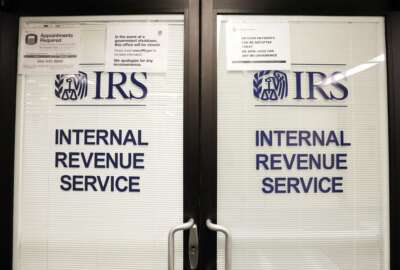

Dave Lebryk, the Treasury Department's fiscal assistant secretary, said the IRS has already recovered about 70% of the $1.6 billion in improper payments to the...
The IRS and Treasury Department made speed a top priority for pandemic payments in the weeks after Congress passed the CARES Act, and in doing so sent more than a million payments to the deceased.
Members of Congress seized on that finding in a Government Accountability Office report as a wake-up call about gaps in the oversight of emergency pandemic spending, and have pointed to better data-sharing as a way to prevent the problem from happening again.
However, Dave Lebryk, the Treasury Department’s fiscal assistant secretary, said Tuesday that the IRS has already recovered about 70% of the $1.6 billion in improper payments to the deceased, and expects more returned checks to turn up as the agency returns to full staffing at its processing facilities.
“That number is actually low because we know that people sent their checks back to the IRS and the IRS hasn’t opened up all its mail yet because of the backlog,” Lebryk said during an Association of Government Accountants virtual conference.
With a limited number of employees coming into the office during the early months of the pandemic, the IRS has been backlogged with more than 10 million pieces of mail during the pandemic.
The recovery of at least $1.1 billion in pandemic payments to the deceased stems from GAO’s recommendations for the IRS to be more aggressive in going after those improper payments.
After Congress passed the CARES Act in March, IRS legal counsel initially interpreted the legislation as requiring the agency to send pandemic payments to everyone who filed a tax return in 2018 or 2019 — regardless of whether those recipients were still alive at the time of payment. But by the third wave of payments, agency lawyers reversed course and determined that payments to the deceased were improper.
At that point, Lebryk said the Bureau of the Fiscal Service, which disburses payments on behalf of Treasury, was able to make changes to its systems with little disruption and in less than a week.
By comparison, the IRS with its legacy systems would’ve spent three weeks making the changeover.
“We have the ability on almost a daily basis to make changes to our reporting system because we have an agile infrastructure and we have a very small group of people,” Lebryk said. “It’s one of the real benefits of agile, whose mindset is how do you actually understand the needs of the customer, how do you understand the needs of the policymakers and then have the ability to make those changes quickly?”
While Treasury and the IRS have recovered a significant majority of the improper payments, the process was no small matter for the federal financial workforce.
Ronda Kent, the assistant commissioner for payment management, said the bureau has processed more than 700,000 returned checks, a volume more than what it processes in a typical year.
The IRS has sent more than 160 million pandemic payments worth $270 billion to households so far. By comparison, the last time the IRS took on public payments on this scale following the 2008 recession, it took the agency more than two months to make 800,000 payments.
Two weeks after Congress passed the CARES Act, Treasury disbursed more than 81 million payments worth $147 billion through direct deposit.
Meanwhile, the bureau has taken on this unprecedented workload with the vast majority of its workforce teleworking.
Dara Seaman, the bureau’s deputy chief financial officer, said about 94% of the workforce has been teleworking during the pandemic, and only 4% of employees have been required to report to work onsite to assist in printing checks and other tasks.
By the time the bureau was on mandatory telework in late March, the bureau’s 3,500 employees were ready to telework on existing infrastructure. In addition, the bureau had an existing emergency protocol and relied on its Incident Response Team to keep the workforce informed about the bureau’s response to the pandemic.
“We had sufficient capacity for mandatory telework on day one because we had years of investment into our remote access infrastructure resiliency,” Seaman said.
Seaman said the bureau has also stood up a data dashboard with information about the pandemic in the regions where the bureau has facilities, which executives have relied on to make determinations about bringing more employees back in the office.
The bureau also has new facility protocols for its office buildings and has updated its cleaning protocols, with cleaning crews in some cases sanitizing space overnight or over the weekend. The bureau has also encouraged employees to flex their schedules to minimize the number of employees in the office at any given moment.
“Throughout COVID-19, the Fiscal Service has continued to be highly effective in meeting our mission because we’re able to quickly implement organizational change,” Seaman said.
Copyright © 2025 Federal News Network. All rights reserved. This website is not intended for users located within the European Economic Area.
Jory Heckman is a reporter at Federal News Network covering U.S. Postal Service, IRS, big data and technology issues.
Follow @jheckmanWFED


